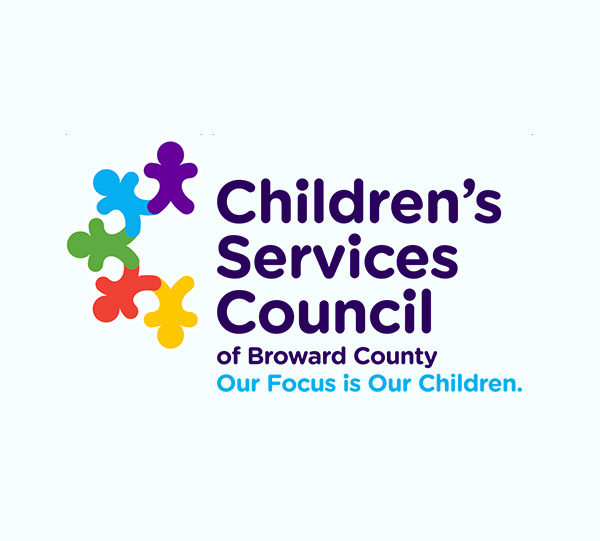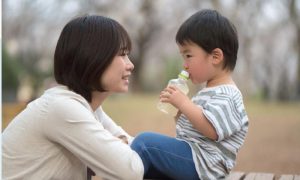7 Safety Tips to Empower Parents
Resource Type
Family Resources
Resource Topic
Share this post


How to Speak with Children about Personal Safety How to Give Children a Voice to Guard Against Sexual Abuse
By Cherie Benjoseph, LCSW Co-founder of the KidSafe Foundation
Safety Tip #1
Parents play an important role in talking with children about personal safety. Most of us were not raised in families that spoke about personal safety, our bodies, or safe and unsafe touches. Today, adult survivors of childhood sexual abuse are finding their voices through outlets such as the #MeToo movement. Our children can’t afford to wait until they become adults to speak up
against abuse. With the right tools and communication, parents can teach their children how to have a voice regarding their personal safety. Learning the warning signs of sexual abuse and how to talk to our children comfortably is an important step in keeping your children safe.
Safety Tip #2
Know the Facts. The more we understand the risks children face, the better we can protect them. When children are harmed, 90% of the time the abuse is by someone they know. 1 in 4 girls and 1 in 6 boys will experience sexual abuse or exploitation before the age of 18. Children may be abused by adults and by other children and teens.
Safety Tip #3
Start by teaching your children the proper names for private parts. Private parts are those parts of the body covered by a bathing suit. Make using the proper names for body parts a natural part of your family communication. Parents who use proper names for body parts send a message of open communication and self-respect to their children, and they become “Approachable
Parents”, type of parent a child can speak with about personal issues. When you speak comfortably about private parts, you give your child a powerful tool to counter exploitation and abuse. If a child ever needs to disclose an unsafe touch,they will be able to tell you what happened.
Safety Tip #4
Begin teaching children about consent at a young age. Give them autonomy over their bodies. This can be done in small ways during daily routines. Most children as young as four can dress, wash and care for themselves. If a child says ‘I can do it myself,’ listen and respect that request. Ask permission before you offer assistance that entails touching. Using language of consent from a young age helps children learn how to use “No” and be listened to.Children must have autonomy regarding hugs and touches from others, even from relatives and close family friends. Children should never be forced to hug and kiss others. The goal is to help children understand that their bodies belong to them and to no one else, and to allow them to accept or decline hugs”. These are opportunities to practice consent from a young age. Being able to use your voice is a protective skill for which your child should be commended and never reprimanded.
Safety Tip #5
Let your children know that their body is special and belongs to them. Introduce early the language of safety – Safe Touch and Unsafe Touch. A Safe Touch makes a child feel comfortable, relaxed, loved, protected and happy. An Unsafe Touch makes a child feel uncomfortable, hurt, confused, scared, weird, embarrassed, angry, or betrayed. Tell your children that if they get an unsafe touch they should come to you and tell you what happened. Assure them that you will listen and they will not get in trouble for sharing what occurred.
Safety Tip #6
Carefully vet the people and organizations with whom you entrust your children. Too often we are quick to assume a person is “safe” because they are a coach, tutor, music teacher,scout leader, babysitter, clergy,neighbor, or relative. Start by simply having conversations with your child’s caregivers about personal safety and the need to protect children from sexual
abuse. These conversations send a message that you are a vigilant and active parent. This will make your child a less desirable target for an offender. Ask the administration of your child’s school, aftercare, sports program, camp, etc. about what steps they have taken to properly vet their teachers, counselors and coaches. You have the right and responsibility to ask what type of training the organization provides their employees to prevent sexual abuse.
Safety Tip #7
Give your child a voice. Show your child you listen. Children who are encouraged and empowered to speak up for themselves will be safer from many of today’s dangers. They will develop resilience, and feel more confident in knowing that their primary caregivers are good listeners and are approachable to speak with about anything.
The KidSafe Foundation is a non-profit organization focused on making our society safer for all children. KidSafe provides tools, children’s programs, and teacher training to prevent child sexual abuse in our homes, schools and community. Empowering parents, teachers and children with skills and knowledge is the best step in prevention. Empowered children become powerful adults. For more resources for parents and professionals working with children visit KidSafeFoundation.org
How to Speak with Children about Personal Safety How to Give Children a Voice to Guard Against Sexual Abuse
By Cherie Benjoseph, LCSW Co-founder of the KidSafe Foundation
Safety Tip #1
Parents play an important role in talking with children about personal safety. Most of us were not raised in families that spoke about personal safety, our bodies, or safe and unsafe touches. Today, adult survivors of childhood sexual abuse are finding their voices through outlets such as the #MeToo movement. Our children can’t afford to wait until they become adults to speak up
against abuse. With the right tools and communication, parents can teach their children how to have a voice regarding their personal safety. Learning the warning signs of sexual abuse and how to talk to our children comfortably is an important step in keeping your children safe.
Safety Tip #2
Know the Facts. The more we understand the risks children face, the better we can protect them. When children are harmed, 90% of the time the abuse is by someone they know. 1 in 4 girls and 1 in 6 boys will experience sexual abuse or exploitation before the age of 18. Children may be abused by adults and by other children and teens.
Safety Tip #3
Start by teaching your children the proper names for private parts. Private parts are those parts of the body covered by a bathing suit. Make using the proper names for body parts a natural part of your family communication. Parents who use proper names for body parts send a message of open communication and self-respect to their children, and they become “Approachable
Parents”, type of parent a child can speak with about personal issues. When you speak comfortably about private parts, you give your child a powerful tool to counter exploitation and abuse. If a child ever needs to disclose an unsafe touch,they will be able to tell you what happened.
Safety Tip #4
Begin teaching children about consent at a young age. Give them autonomy over their bodies. This can be done in small ways during daily routines. Most children as young as four can dress, wash and care for themselves. If a child says ‘I can do it myself,’ listen and respect that request. Ask permission before you offer assistance that entails touching. Using language of consent from a young age helps children learn how to use “No” and be listened to.Children must have autonomy regarding hugs and touches from others, even from relatives and close family friends. Children should never be forced to hug and kiss others. The goal is to help children understand that their bodies belong to them and to no one else, and to allow them to accept or decline hugs”. These are opportunities to practice consent from a young age. Being able to use your voice is a protective skill for which your child should be commended and never reprimanded.
Safety Tip #5
Let your children know that their body is special and belongs to them. Introduce early the language of safety – Safe Touch and Unsafe Touch. A Safe Touch makes a child feel comfortable, relaxed, loved, protected and happy. An Unsafe Touch makes a child feel uncomfortable, hurt, confused, scared, weird, embarrassed, angry, or betrayed. Tell your children that if they get an unsafe touch they should come to you and tell you what happened. Assure them that you will listen and they will not get in trouble for sharing what occurred.
Safety Tip #6
Carefully vet the people and organizations with whom you entrust your children. Too often we are quick to assume a person is “safe” because they are a coach, tutor, music teacher,scout leader, babysitter, clergy,neighbor, or relative. Start by simply having conversations with your child’s caregivers about personal safety and the need to protect children from sexual
abuse. These conversations send a message that you are a vigilant and active parent. This will make your child a less desirable target for an offender. Ask the administration of your child’s school, aftercare, sports program, camp, etc. about what steps they have taken to properly vet their teachers, counselors and coaches. You have the right and responsibility to ask what type of training the organization provides their employees to prevent sexual abuse.
Safety Tip #7
Give your child a voice. Show your child you listen. Children who are encouraged and empowered to speak up for themselves will be safer from many of today’s dangers. They will develop resilience, and feel more confident in knowing that their primary caregivers are good listeners and are approachable to speak with about anything.
The KidSafe Foundation is a non-profit organization focused on making our society safer for all children. KidSafe provides tools, children’s programs, and teacher training to prevent child sexual abuse in our homes, schools and community. Empowering parents, teachers and children with skills and knowledge is the best step in prevention. Empowered children become powerful adults. For more resources for parents and professionals working with children visit KidSafeFoundation.org


